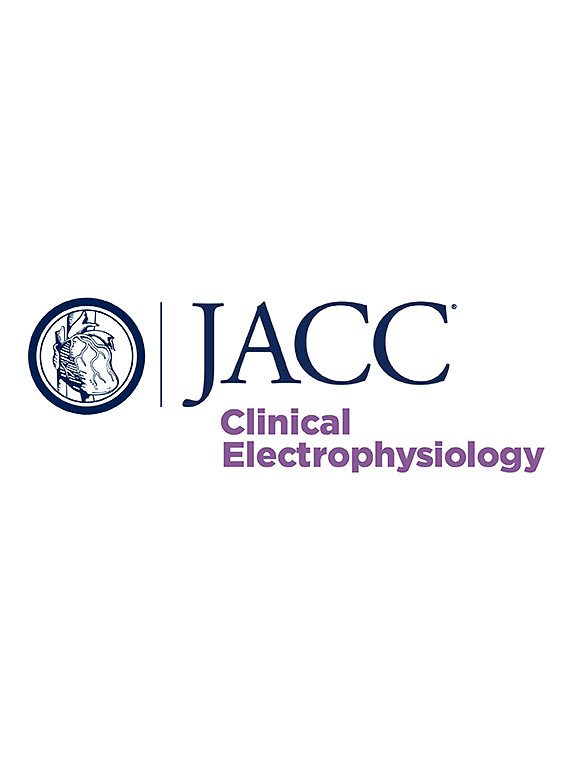Impact of Catheter Ablation of Electrical Storm on Survival
IF 8
1区 医学
Q1 CARDIAC & CARDIOVASCULAR SYSTEMS
引用次数: 0
Abstract
Background
Electrical storm (ES) is a life-threatening condition, associated with substantial early and subacute mortality. Catheter ablation (CA) is a well-established therapy for ES. However, data regarding the impact of CA on the short-term and midterm survival of patients admitted for ES remain unclear.
Objectives
This multicenter study aimed to investigate the impact of CA of ES on survival outcomes, while accounting for key patient characteristics associated with treatment selection.
Methods
A propensity score–matching (PSM) analysis was performed on 780 consecutive patients admitted for ES in 4 tertiary centers. PSM (1:1) based on the main characteristics associated with the use of CA or medical therapy alone was performed, resulting in 2 groups of 288 patients.
Results
After PSM, patients who underwent CA (n = 288) and those treated with medical therapy alone (n = 288) did not present any significant differences in the main demographic characteristics, ES presentation, and management. Compared with medical therapy alone, CA was associated with a significantly lower rate of ES recurrence at 1 year (5% vs 26%; P < 0.001). Similarly, CA was associated with a higher 1-year (91% vs 81%; P < 0.001) and 3-year (78% vs 71%; P = 0.017) survival after discharge. In subgroup analyses, effect of ablation therapy remained consistent in patients older than 70 years of age (HR: 0.39; 95% CI: 0.24-0.66), with substantial efficacy in patients with a LVEF <35% (HR: 0.39; 95% CI: 0.27-0.59).
Conclusions
In propensity-matched analyses, this large study shows that CA-based management of patients admitted for ES is associated with a reduction in mortality compared with medical treatment, particularly in patients with a low ejection fraction.
导管消融电风暴对存活率的影响:倾向评分匹配分析。
背景:电风暴(ES)是一种危及生命的疾病,与早期和亚急性期的高死亡率有关。导管消融术(CA)是治疗 ES 的一种行之有效的疗法。然而,有关导管消融对因 ES 而入院的患者短期和中期存活率影响的数据仍不清楚:这项多中心研究旨在调查 ES CA 对生存结果的影响,同时考虑与治疗选择相关的主要患者特征:方法:对4个三级中心连续收治的780名ES患者进行倾向评分匹配(PSM)分析。根据与使用 CA 或单纯药物治疗相关的主要特征进行倾向评分匹配(1:1),得出 2 组共 288 名患者:结果:经过PSM分析,接受CA治疗的患者(288人)和单纯接受药物治疗的患者(288人)在主要人口统计学特征、ES表现和治疗方法上没有明显差异。与单纯药物治疗相比,接受 CA 治疗的患者 1 年后 ES 复发率明显降低(5% vs 26%; P < 0.001)。同样,CA 与较高的出院后 1 年生存率(91% vs 81%;P < 0.001)和 3 年生存率(78% vs 71%;P = 0.017)相关。在亚组分析中,消融治疗对 70 岁以上患者的疗效保持一致(HR:0.39;95% CI:0.24-0.66),对 LVEF 结论的患者疗效显著:在倾向匹配分析中,这项大型研究表明,与药物治疗相比,对因 ES 入院的患者进行基于 CA 的治疗可降低死亡率,尤其是射血分数较低的患者。
本文章由计算机程序翻译,如有差异,请以英文原文为准。
求助全文
约1分钟内获得全文
求助全文
来源期刊

JACC. Clinical electrophysiology
CARDIAC & CARDIOVASCULAR SYSTEMS-
CiteScore
10.30
自引率
5.70%
发文量
250
期刊介绍:
JACC: Clinical Electrophysiology is one of a family of specialist journals launched by the renowned Journal of the American College of Cardiology (JACC). It encompasses all aspects of the epidemiology, pathogenesis, diagnosis and treatment of cardiac arrhythmias. Submissions of original research and state-of-the-art reviews from cardiology, cardiovascular surgery, neurology, outcomes research, and related fields are encouraged. Experimental and preclinical work that directly relates to diagnostic or therapeutic interventions are also encouraged. In general, case reports will not be considered for publication.
 求助内容:
求助内容: 应助结果提醒方式:
应助结果提醒方式:


